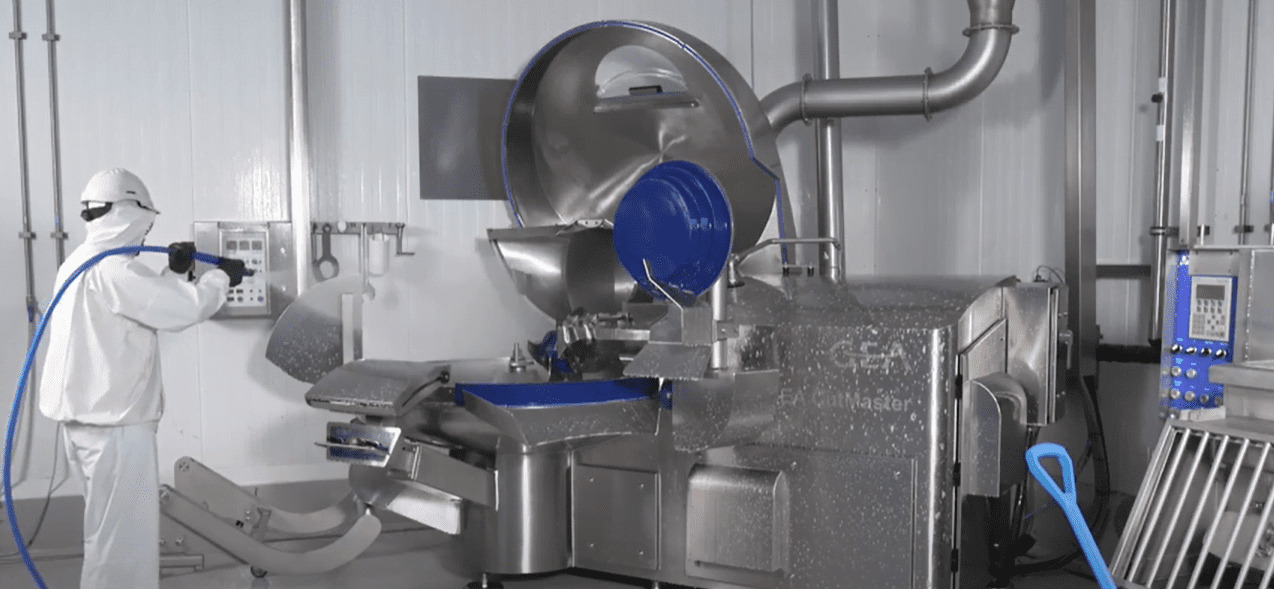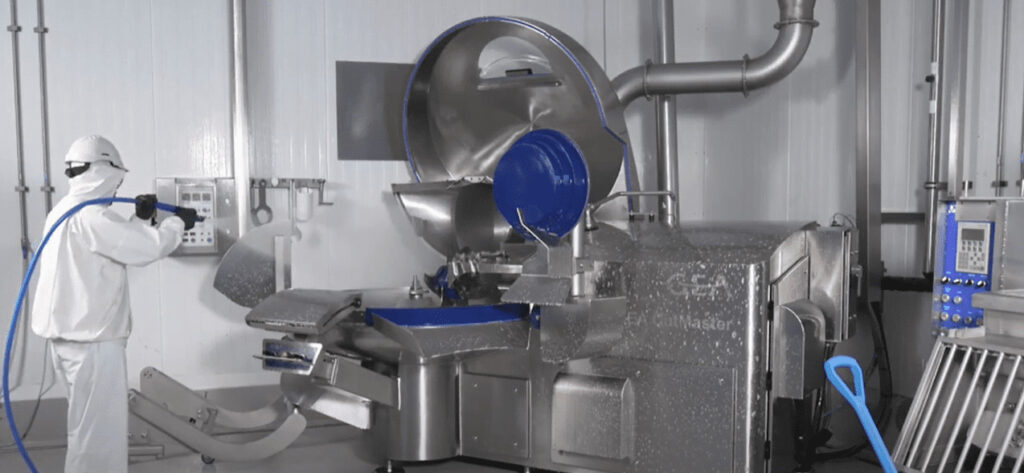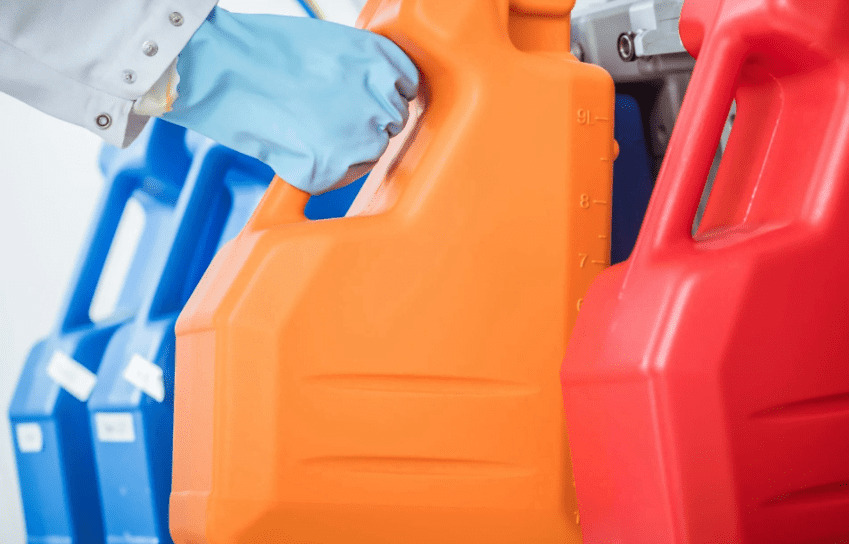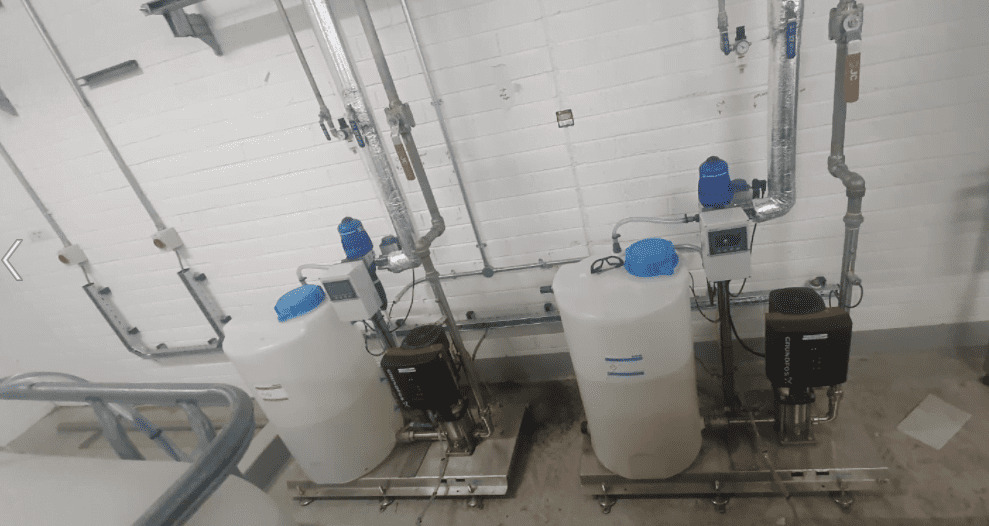
A food contact surface must be cleaned and sanitized. What are the most effective cleaning methods for surface cleaning?
The term Surface cleaning is used in the cleaning and food processing industries but is often confusing because it can be named differently in different industries/countries/companies. The various terms are COP, cleaning out of place, clean out of place, open plant cleaning, open works cleaning or simply surface cleaning.
This Blog will give you a full guide to all things related to Surface cleaning.
- What does it mean?
- Where is it used?
- What cleaning solution are used for surface cleaning?
- What is the correct order of cleaning contact surfaces?
- Cleaning equipment for smart cleaning
- Business cases showing surface cleaning
- What cleaning system would work best for you?
Surface cleaning – What does it mean?
Surface cleaning process in the food and beverage production facilities involves cleaning and sanitation of all surfaces like floors, walls, tables various equipment and other surfaces located inside of the production facilities.
Sometimes, the term surface cleaning is also referred to as “Manual cleaning” because the discharge hose used for cleaning is held manually by the cleaning personnel – See picture 1.
Surface cleaning – Where is it used?
Surface cleaning is a common method of cleaning in various industries like Food & Beverage, Retail, Institutional, Life Sciences and Agricultural.

What cleaning solutions are used for surface cleaning?
- Decentralized cleaning solution
- Centralized also called pre-diluted cleaning solution
- Tap water cleaning solution
- Air driven cleaning solution
There are several differences between these four systems, where the most important are:
a). Water pressure used for cleaning
b). Placement of detergents used for cleaning
c.) Sources that drive the equipment
a). Water pressure used for cleaning
In the decentralized and centralized systems, the water pressure can be adjusted from 5 bar up to 25 bar or even up to 40 bar (on the medium pressure range of equipment). The tap water system as the name indicate, works at the tap water pressure between 2-6 bar. The air driven system is only driven by air, therefore water pressure is not applicable for this system.
b). Placement of detergents
In the Decentralized, tap water and air driven systems the concentrated detergents are located inside of the production facilities in jerry cans or user packs- see pictures 1 and 2, whereas in the Centralized system, the concentrated detergents are stored in a central room located outside of the production facilities–See picture 3.


c). Sources that drive the equipment
The Decentralized, centralized and tap water systems are water driven, meaning that chemical pick up is caused by vacuum generated by water injected into the system. The Air driven system is purely air driven as the name indicates, meaning that air is injected into the system and pics up the detergent.
What is the correct order for cleaning food contact surfaces?
Complete surface cleaning process to achieve maximum hygiene results and food safety consists of ten steps shown in figure 1:


| Step 1 | PREPARATION | Remove manually the biggest food remains |
| Step 2 | PRE-RINSE | Pre-rinse with discharge hose and a rinse nozzle |
| Step 3 | FOAM | Apply foam from bottom to top using a hose and a foam nozzle |
| Step 4 | TIME | Let the foam cleaning detergents do the cleaning job |
| Step 5 | RINSE | Rinse off the detergent from top to bottom using a discharge hose and a rinse nozzle |
| Step 6 | SWAB TEST | Check the cleaning results conduction the ATP Swab test -optional step |
| Step 7 | DISINFECTION | Apply disinfectant from bottom to top using discharge hose and a foam nozzle or spray nozzle |
| Step 8 | TIME | Let the sanitizing product do the cleaning job |
| Step 9 | FINAL RINSE | Final rinse from top to bottom using a discharge hose and rinse nozzle |
| Step 10 | POST PROCESSING | Close for air supply, rinse suction lines and injectors with clean water to protect equipment and next operator |
See video developed by one of our partners Ecolab showing the complete cleaning and disinfection process of surfaces in the food and beverage production facilities
See Nilfisk FOOD’s How to use videos showing the operation procedure of cleaning and disinfecting equipment.
Cleaning equipment for smart cleaning
Nilfisk FOOD offer a full range of cleaning equipment for smart cleaning of surfaces in the food and beverage, Retail, Institutional, Life Sciences and Agricultural industries. We are the pioneer of the low-pressure foam cleaning technology (link til foam film) and trendsetters within the world of industrial hygiene, specialized in optimizing cleaning processes and food safety around the globe. Thanks to our patented technologies we contribute to sustainable efforts aiming to protect the world’s most valuable resources and food safety of every production facility:
Looking for real live examples?
Review Business cases where Nilfisk FOOD’s equipment is used for surface cleaning:
- Food & Beverage – Sofrimar business case
- Retail – Griff unit used at Costco
- Institutional market – Nommo tap water station used at Bones restaurant chain
Do you need cleaning equipment to secure food safety of your production facilities, but wonder what cleaning system would work best for you?
There are many different factors to be taken into consideration when selecting the right cleaning method to clean surfaces. Some of them are:
- kind of dirt to be cleaned,
- size of your production facilities,
- water flow in your production facilities,
- access to external air,
- number of cleaning personnel cleaning at the same time,
- safety rules at your facilities,
- chemical handling rules
- budget and many other factors.
Book a 30-minute, free of charge consultancy session with our experts so we can discuss your requirements and jointly decide what type of equipment will work best for you.
Book a 30 min consultancy session